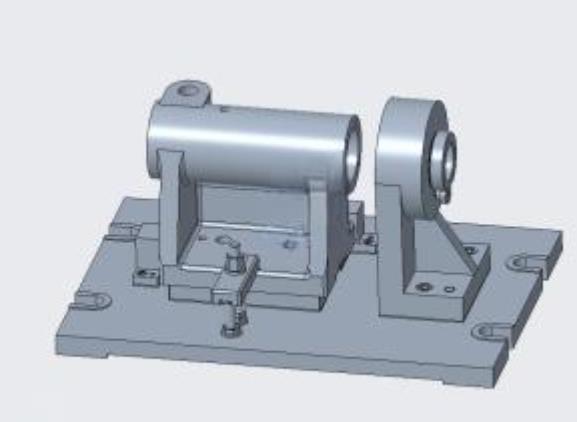Optimize Crank Arm Machining Process and Fixture Design
Time:2024-06-05 21:18:59 Source:未知 Click:次
With the continuous development of modern mechanical manufacturing, the requirements for the machining precision and efficiency of parts like crank arms have been increasing. As an essential part in mechanical equipment, the crankshaft primarily serves to transmit power. Therefore, ensuring the quality of crank arm machining and optimizing the machining process and fixture design have become key issues in the manufacturing industry. This article will elaborate on how to optimize the machining process and fixture design for crank arms from several aspects.
1. Optimization of Machining Process:
a. Selecting Reasonable Machining Methods: Choose appropriate machining methods based on the requirements of crank arm processing, such as turning, milling, and grinding. Ensure machining quality while improving efficiency.
b. Utilizing Advanced Machining Equipment: Select high-precision, high-stability machining equipment like CNC machines and machining centers to ensure machining accuracy.
c. Optimizing Machining Sequence: A reasonable machining sequence can reduce cumulative errors during processing and improve machining precision. Start with rough machining and then proceed to precision machining. In the precision machining phase, complete basic shapes like planes and holes before complex surface machining.
d. Optimization of Cutting Parameters: Reasonable cutting parameters can improve machining efficiency and reduce costs. Cutting parameters include cutting speed, feed rate, and cutting depth. Adjust them according to actual conditions to achieve the best machining effect.
e. Selection of Appropriate Cutting Tools: Using suitable cutting tools can improve machining quality and efficiency. Choose tool types and blade materials based on the material and processing technology of the crank arm.
2. Optimization of Fixture Design:
a. Optimization of Fixture Structure: A reasonable fixture structure can improve processing stability and reduce machining errors. Try to make the fixture structure simple, compact, and easy to clamp and adjust.
b. Optimization of Clamping Method: Choose suitable clamping methods based on the processing characteristics of the crank arm. Use methods such as pneumatic, hydraulic, and electromagnetic clamping to improve machining precision and efficiency.
c. Connection of Fixture and Machining Equipment: The connection between the fixture and the machining equipment should be firm and stable to avoid vibrations during processing. Use elastic connections, fixed connections, etc.
d. Fixture Accuracy: The accuracy of the fixture itself directly affects machining precision. Select high-precision, high-stability fixtures and conduct appropriate adjustments and calibrations.
e. Reliability of Fixtures: The reliability of fixtures is crucial for the smooth progress of processing. Consider factors such as strength, rigidity, and wear resistance of the fixtures adequately.
In conclusion, optimizing the machining process and fixture design for crank arms is an important means to improve machining quality and efficiency. The manufacturing industry should pay sufficient attention to this and continuously innovate and improve technologies to meet the development needs of modern mechanical manufacturing.


